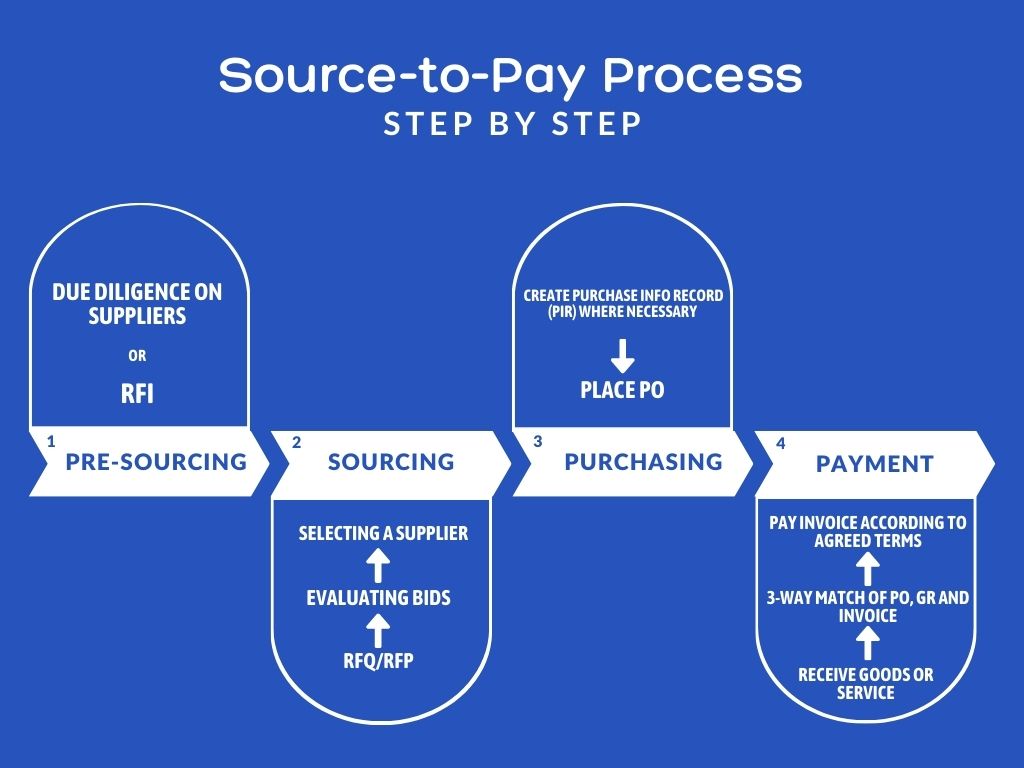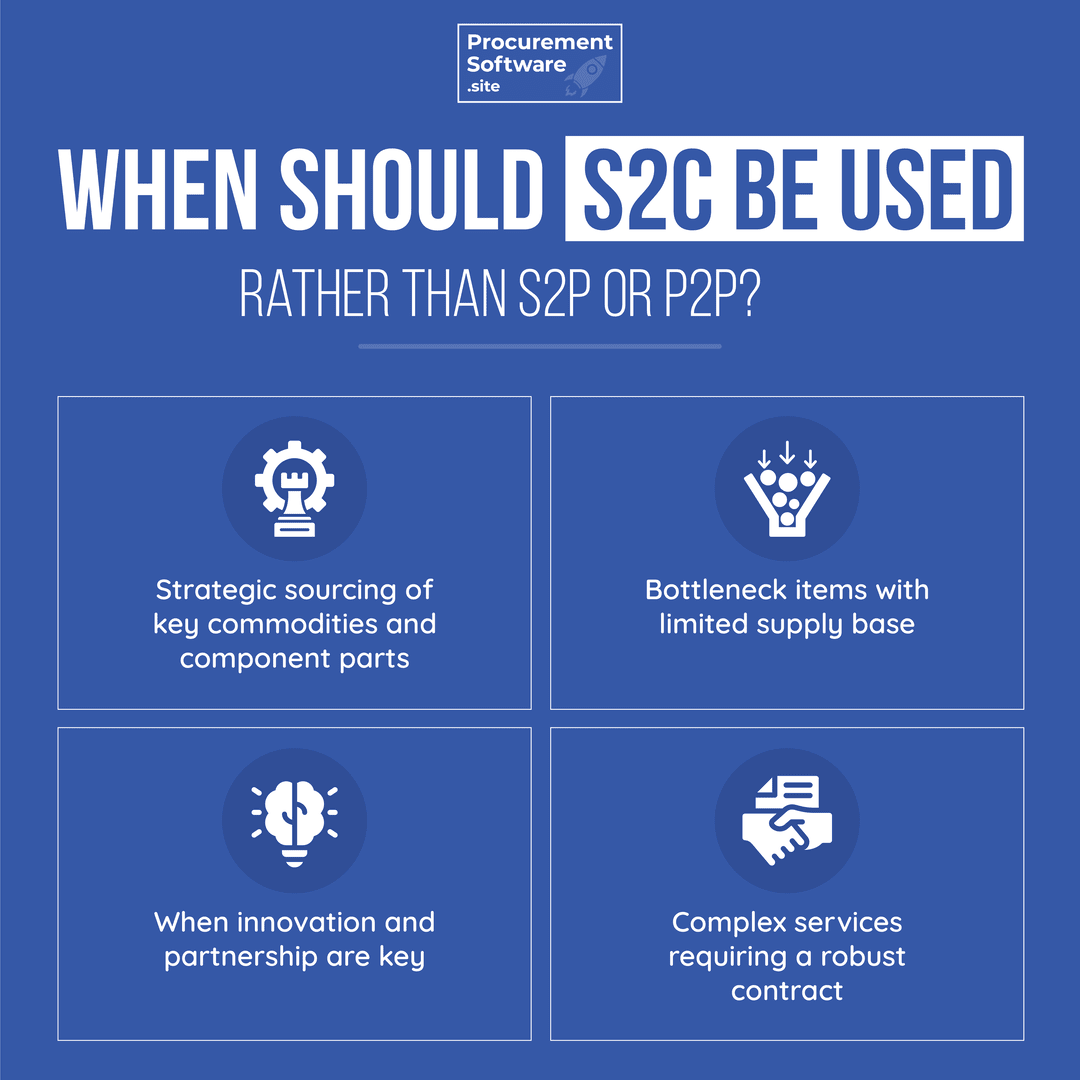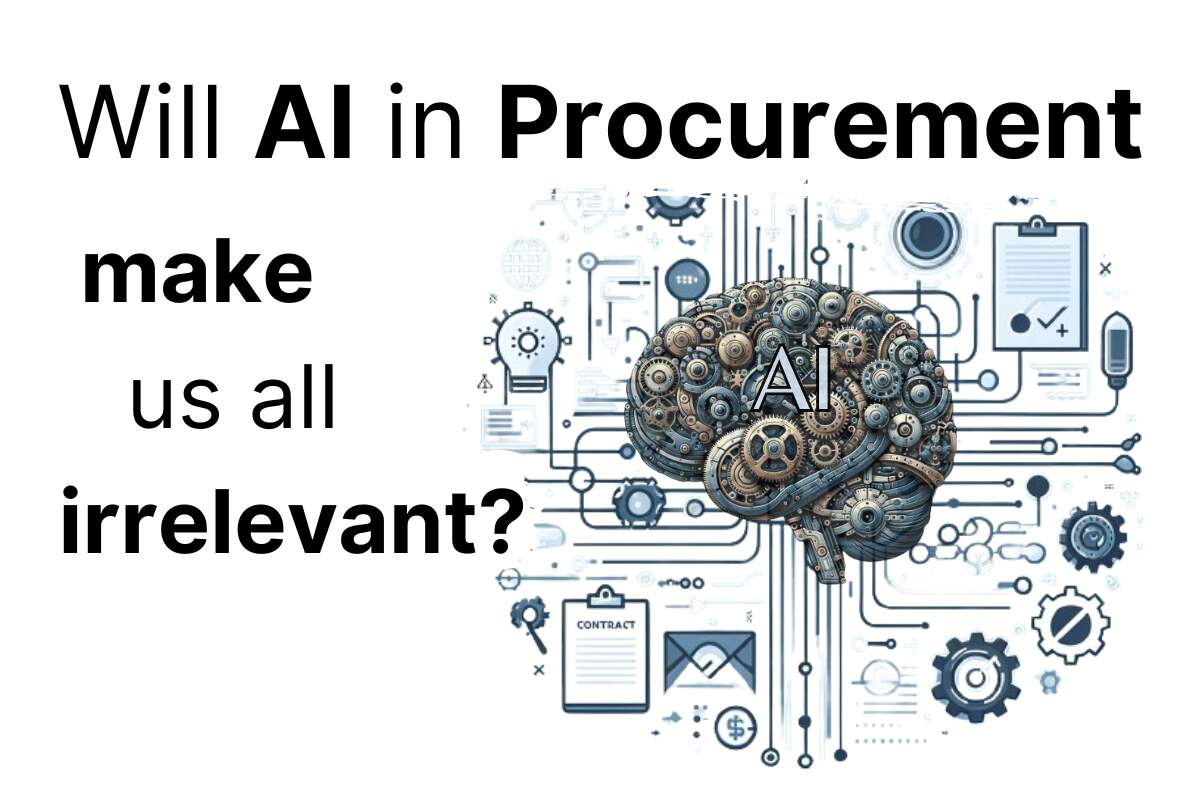There is a distinct and significant different between Source-to-Contract (S2C) and Source-to-Pay (S2P).
If we look at it in terms of software, there are significant differences between the features offered by Source-to-Contract software solutions vs. Source-to-Pay suites.
With ever more technology coming onto the market, we thought it was time to walk through the main differences.
We’ll then cover what to look for in a software solutions provider for Source-to-Contract vs. Source-to-Pay. Also, we’ll review to what extent some software suites can cover both S2C and S2P solutions. Then, finally, we’ll guide you through the pros and cons of having everything in one suite.
If you’re wondering, then we also covered the key differences between source-to-pay and procure-to-pay in a separate article!
What is Source-to-Contract?
Source-to-Contract is the end-to-end process which starts with performing due diligence on a supplier, and culminates in a contract being approved, signed and implemented. It is predominantly used for the strategic sourcing of critical goods and services from strategic suppliers.
What is Source-to-Pay?
Source-to-Pay on the other hand focuses on the more tactical sourcing performed as part of a competitive bidding process. This is typically specified by a procurement process which requires the solicitation of (usually) three quotations or proposals if the spend is above a certain amount.
These are then evaluated, a supplier is chosen, a PO is placed and upon delivery of the goods or services, an invoice is submitted and processed.
What steps are included in Source-to-Contract?
There are typically 7 steps involved in a standard Source-to-Contract process, as depicted in the infographic below:

Of course, not every single source-to-contract situation will follow all of these steps to the letter. For example, you may skip some of the due diligence and RFI steps if the supply base is well-known.
How is S2C different to Source-to-Pay and Procure-to-Pay?
S2C is an “upstream” procurement process.
S2P, and especially P2P, is more of a “downstream” action.
In other words, PO-to-payment is the latter part of the cycle. This is different to sourcing and contracting with potential suppliers, which comes at the beginning of any procurement related activity.
Source-to-Contract is strategic
S2C is a formal process, conducted with the most important suppliers. Typically, these will either be critical or bottleneck vendors. The aim is to ensure that products and services are sourced and contracted according to best procurement practices. Usually, this is conducted by a centralised or corporate procurement team.
Source-to-Pay is usually tactical
S2P is the typical “three bids and a buy” type of sourcing activity for non-strategic spend. The general process is shown in the graphic below:

Usually, the value of the goods and services necessitate it going through a competitive bidding process. Maybe a simple auction could be performed too.
However, this type of sourcing is predominantly driven by cost rather than a TCO and detailed due diligence approach.
Procure-to-Pay is almost always just transactional
With P2P, we’re talking usually about high volume, low value or one-time purchases: the long tail. These are non-critical and non-complex items or services.
Much of this can be covered by e-procurement or specialist integrators or group purchasing organisations (GPOs). These outsourced providers are specialists in their area of spend or expertise.
The objective for procure-to-pay in most relatively mature procurement teams is to enable the requisitioner to self-serve as much as possible. Using scarce procurement resources to purchase these items doesn’t provide added value to the process.
What does Source-to-Contract not involve?
S2C software does NOT typically cover the more operational and transactional functionalities that you would expect to find in S2P or P2P software.
Examples would be things like accounts payable automation, e-procurement, guided buying and PR-to-PO automation.
When should a Source-to-Contract approach be used?
Now that we’ve outlined the key differences, let’s look at when S2C should be used rather than S2P or P2P.

This is the process that you follow for strategic, high value-add suppliers, or where bottlenecks and risks are prevalent in the supply base.
A relatively small number of your total suppliers – which represent a significant percentage of spend- will typically be the ones who you would include in a source-to-contract process.
If we break this down for a typical procurement team, then we’re looking at something like this:
S2C: 50% of spend – 5% of the total vendor count
S2P: 40% of spend – 10-20% of the total vendor count
P2P: 10% of spend / 75-80% of vendor count
Poor source-to-contract processes or a lack of strategic sourcing will also have an impact on the more transactional P2P side of the business.
What happens if you don’t follow a formal sourcing and contracting process for core suppliers of critical goods and services? It means a higher risk of running blind.
A lack of negotiated pricing, terms and conditions with a bunch of vendors not being actively managed by procurement. In other words, a higher risk of maverick spend and accounts payable issues.
What should you look for in Source-to-Contract software?
So, now comes the fun part of figuring out which type of source-to-contract software is best for your organisation.
Is a stand-alone, best-of-breed software what you’re looking for? Or is it better to have source-to-contract functionality as part of a procurement software suite?
Start by asking yourself these 3 basic questions:
1.Do you need integration with ERP for your procurement software?
It will typically be less important for S2C software than for S2P software.
Why?
Because source-to-contract doesn’t require a seamless integration with your ERP system or accounts payable software to pay invoices. If you don’t need ERP integration, then ease of use should be high on your priority list. This will ensure wider adoption among your user base. Nobody wants to use complex, clunky software.
2.How much functionality and automation do you want for contract management?
Most of the larger end-to-end procurement suites will not be able to provide clause libraries, AI-driven guidance, or automation for approval and signature process. If you’re already running something like DocuSign or Panda Doc, this may not be an issue.
If you’re not, then a separate, best-of-breed solution for contract management may be beneficial.
In which case, a Source-to-Pay (S2P) suite plus a separate Contract Lifecycle Management (CLM) tool is perhaps the best way to manage your end-to-end S2C requirements.
3.Are you enterprise, mid-market or an SME?
Enterprise businesses will likely see the advantages of a joined-up approach with full ERP integration for their complete procurement cycle.
Whereas mid-market businesses and SMEs will likely profit from the agility and better user experience of the best-of-breed tools.
Something like Coupa Software or SAP Ariba has its advantages for large enterprises, but is a difficult sell to the mid-market. Their complexity, poor UI and UX, and long implementation times will mean you will likely struggle to justify the ROI. It also may impact the adoption of the tool among your stakeholders.
Can S2C and S2P be performed in one software suite?
Yes, they can.
But you’re going to sacrifice features and user experience by taking this route. There’s no right or wrong answer here. I would spend some time and ask yourself – and your key stakeholders in IT and Finance – what is more important for your organisation?
Do you want everything in one place, with ERP integration? Great, but what about if the solution may feel a bit clunky?
Or do you prefer a more agile approach with best-of-breed solutions, offering greater functionality, better UX and more customisation?
I know which one I would choose personally. However, I also see the potential advantages of the all-in-one suites which covering both source-to-contract and source-to-pay.
At the end of the day, it really boils down to how many features you want in the sourcing and the contract management modules. The convenience of a suite is the trade-off you make when it comes to features, user experience, customisation, and agility through taking a modular approach.
Can I have my cake and eat it?!
There could well be a solution that gives you the best of both worlds. Let’s take a look at our software partners at Raindrop .
They’ve built an end-to-end, modular procurement suite which seeks to offer the flexibility that a best-of-breed “LEGO” type building block approach can offer. But, unlike the legacy brands, Raindrop is a relative new kid on the block, meaning it’s built using the latest technology.
Because Raindrop has seasoned procurement pros in their founding team, it’s also built with the wants and needs of modern procurement functions in mind. This means that the UX and the speed of implantation is what sets them apart.
No huge consulting projects that last a year to get the software up and running.
No clunky interface from 2010 that your users will do anything to avoid having to use.
Why not check them out here and schedule a demo.


